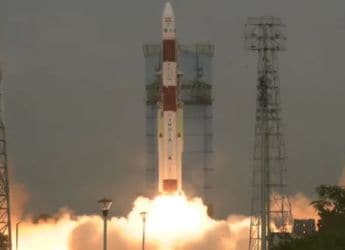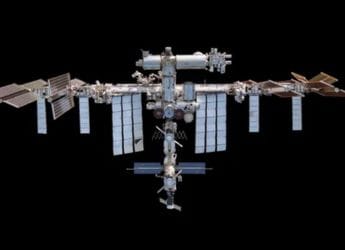- Home
- Science
- Science News
- Google AI That Helped NASA Find Exoplanets Now Available to All
Google AI That Helped NASA Find Exoplanets Now Available to All

Photo Credit: NASA/Wendy Stenzel
A Google model based on Artificial Intelligence (AI) and Machine Learning (ML) that helped NASA discover two exoplanets, is now available for researchers to process data from Kepler Space Telescope.
The "TensorFlow" model decoded massive sets of data from NASA's Kepler Space Telescope to discover two exoplanets last year, including one that has the first known eight-planet system like ours.
One of the two newly-discovered planets is Kepler-90i -- a sizzling hot, rocky planet that orbits its star once every 14.4 days. This marked the discovery of an eighth planet circling Kepler-90, a Sun-like star 2,545 light-years from Earth - making it the first known eight-planet system outside of our own.
"We're excited to release our code for processing the Kepler data, training our neural network model and making predictions about new candidate signals," Chris Shallue, Senior Software Engineer, Google Brain Team, said in a blog post.
Google hopes the open-sourced code will prove a useful starting point for developing similar models for other NASA missions, like K2 (Kepler's second mission) and the upcoming "Transiting Exoplanet Survey Satellite" mission.
To search for planets in Kepler data, scientists used automated software to detect signals that might be caused by planets and then manually followed up to decide whether each signal is a planet or a false positive.
"We've only searched 670 stars out of 200,000 observed by Kepler a" who knows what we might find when we turn our technique to the entire dataset. We hope this release will prove a useful starting point for developing similar models," Google said.
Kepler-90i is 30 percent larger than Earth and has a surface temperature of approximately 800 degree F (426.6 degrees Celsius).
It also orbits its star every 14 days.
The discovery came after Shallue and Andrew Vanderburg at Google AI trained a computer to learn how to identify exoplanets in the light readings recorded by Kepler -- the minuscule change in brightness captured when a planet passed in front of, or transited, a star.
Inspired by the way neurons connect in the human brain, this artificial "neural network" sifted through Kepler data and found weak transit signals from a previously-missed eighth planet orbiting Kepler-90, in the constellation Draco.
While machine learning has previously been used in searches of the Kepler database, the new research demonstrated that neural networks are a promising tool in finding some of the weakest signals of distant worlds.
Catch the latest from the Consumer Electronics Show on Gadgets 360, at our CES 2026 hub.
Related Stories
- Samsung Galaxy Unpacked 2025
- ChatGPT
- Redmi Note 14 Pro+
- iPhone 16
- Apple Vision Pro
- Oneplus 12
- OnePlus Nord CE 3 Lite 5G
- iPhone 13
- Xiaomi 14 Pro
- Oppo Find N3
- Tecno Spark Go (2023)
- Realme V30
- Best Phones Under 25000
- Samsung Galaxy S24 Series
- Cryptocurrency
- iQoo 12
- Samsung Galaxy S24 Ultra
- Giottus
- Samsung Galaxy Z Flip 5
- Apple 'Scary Fast'
- Housefull 5
- GoPro Hero 12 Black Review
- Invincible Season 2
- JioGlass
- HD Ready TV
- Laptop Under 50000
- Smartwatch Under 10000
- Latest Mobile Phones
- Compare Phones
- Vivo Y500i
- OnePlus Turbo 6V
- OnePlus Turbo 6
- Itel Zeno 20 Max
- OPPO Reno 15 Pro Mini 5G
- Poco M8 Pro 5G
- Motorola Signature
- Vivo Y50e 5G
- Lenovo Yoga Slim 7x (2025)
- Lenovo Yoga Slim 7a
- Realme Pad 3
- OPPO Pad Air 5
- Xiaomi Watch 5
- Huawei Watch 10th Anniversary Edition
- Acerpure Nitro Z Series 100-inch QLED TV
- Samsung 43 Inch LED Ultra HD (4K) Smart TV (UA43UE81AFULXL)
- Asus ROG Ally
- Nintendo Switch Lite
- Haier 1.6 Ton 5 Star Inverter Split AC (HSU19G-MZAID5BN-INV)
- Haier 1.6 Ton 5 Star Inverter Split AC (HSU19G-MZAIM5BN-INV)

















